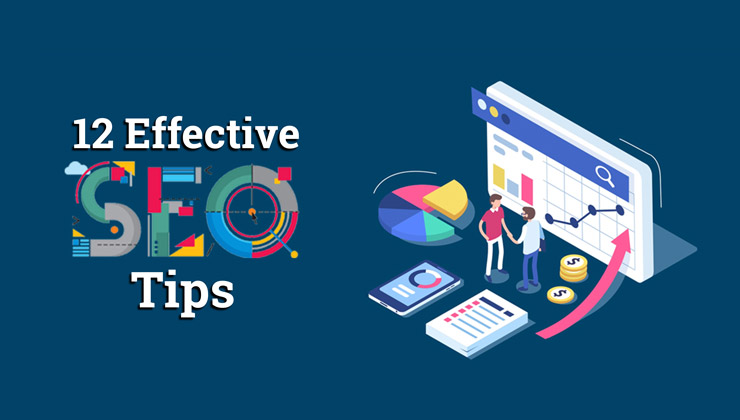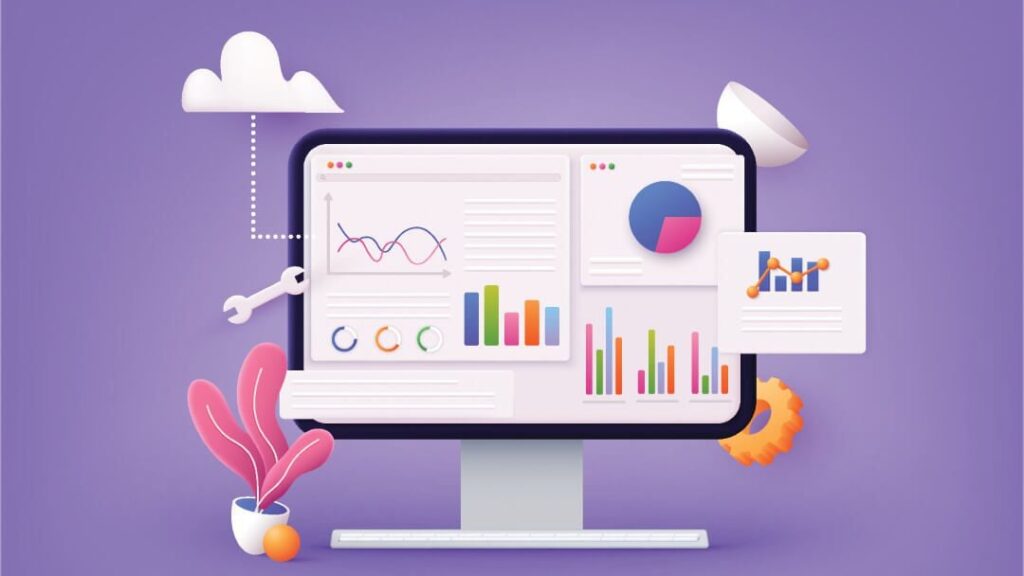
Nov 08, 2022
0 Comment by ViewersFor any author, SEO (Search Engine Optimization) is essential. To increase organic traffic in today’s oversaturated environment and frequent modification of algorithms, it’s critical to focus on the proper tips and implement the right technique. These 12 effective SEO tips can assist you in increasing organic traffic in 2022:


In June 2021, Google released the latest official ranking upgrade Core Web Vitals. Google’s fundamental changes are often about content. This time, though, it’s all about the user experience (UX).
Core Web Vitals are page experience signals that assess your site’s UX by examining three key factors:
Google, on the other hand, attempts to provide its consumers with the best experience and engagement across several devices. In reality, with Google’s transition to 100% mobile-first indexing beginning in March 2021, smartphone signals are the most significant.

We have discussed the significance of internal and external links. We only used one, by the way!
Internal links are useful for connecting different pages on your website using relevant keywords. It can be a great opportunity for SEO because traffic isn’t always dispersed fairly across all sites, leaving many pages orphaned.
Spencer Haws, for example, conducted an experiment on his website to see how internal connections affect rankings. After adding internal links to 47 articles (without changing the text), 76.6% of the posts improved in Google rankings. Isn’t that impressive?
Using internal links allows Google to better grasp context and signal the worth of the page by using anchor text (clickable content in a hyperlink).
However, having too many internal connections on each page, according to Google’s John Mueller, might be detrimental. Because cross-linking every page causes search engines to lose track of the site’s structure and the relevancy of one page to another.
You can also read: Best Digital Marketing Agency in Bangladesh

Entity-based SEO is a context-based word or term that may be used to contextually characterize your specialty. Entity-based SEO focuses on broad subjects and concepts, allowing search engines to return correct results immediately.
Some words and phrases have several meanings. Consider the following example. The term “capri” refers to a popular juice drink called “Capri Sun,” an Italian island, a type of trousers, and more!
So, how exactly do you get your content in front of the proper people?
Semantic search capabilities have improved to the point that search engines can grasp the meaning of users’ requests.
To assist Google to comprehend what your website is about, insert a keyword related to your niche. It’s also not a terrible idea to include it in the meta title or within the title tag.
Internal links and domain authority are also important here, since you want Google to add you to the high E-A-T (expertise, authoritativeness, and trustworthiness) knowledge graphs.
Why?
Because Google prefers pages from authoritative sources, which extends beyond domain ratings. Essentially, the more your competence on the issue (in Google’s opinion), the better it is for your ranking.

Users’ favorite content type is unsurprisingly video. So, by turning your blog article into a video, you increase your chances of reaching a larger audience.
According to research, publishers that use video material on their websites receive 41% more search traffic than those who solely use written content. Furthermore, video is responsible for a 157% boost in organic traffic from search engines.
Another suggestion is to undertake YouTube SEO, which is the inverse of Google SEO. On YouTube, your video must have the most exposure in the first 24 hours in order to rank as high as possible, whereas an article might emerge in the first place after some time.
 You can also read: Facts about Mobile Email Marketing
You can also read: Facts about Mobile Email Marketing
Google Discover is Google’s tailored AI-powered mobile news stream. It’s a sort of query-less search that uses subjects that are relevant to users’ interests and prior search activity.
Visitors’ interaction with the information is measured by the Discover feed. As a result, if people enjoy your material, chances are you’ll appear in their stream again.
Google Discover, on the other hand, does not operate equally well with all websites. News websites garnered 99% of all clicks, according to an examination of 11,000+ URLs. Websites that fit into one of the following categories have also performed well:
High-quality, interesting material is required to appear on Google Discover.
Another strategy for increasing traffic from Google Discover is to include the Max Picture Preview meta tag, which instructs Google to display your content with a huge image.
To do so, paste this element directly or through a plugin into the HTML source code of your blog content.

It is critical to maintain the material as current and fresh as possible. This is due to the fact that search engines emphasize the most relevant (and most current) material for consumers.
Take a look at the image below. On 11/11/2021, we updated our blog article regarding programmatic advertising market developments. The spike in the graph depicts how traffic volume surged following the upgrade.
But don’t believe that merely updating the posting date on an old blog post would suffice. It all comes down to the content. When reviewing previous articles, strive to collect the most recent data and truly important material, as well as keyword research.
You’ll receive more social shares and backlinks if you can create your own data-driven material, such as infographics or charts. For example, in 2019-2020, we utilized data from the Setup AD reporting system to show the eCPM shift across three websites in our network.
Consider updating a 2015 article with a snapshot of the Instagram UI from that year. Even if the material is still current, it quickly feels like extremely outdated knowledge.
This may be used to locate and include missing subjects into your existing material.
For example, we do a page-level content gap analysis in Ahrefs Keyword Explorer against the top sites for our target keyword for our blog post about 4 types of programmatic transactions.
We discovered that it does not rank for at least three keywords with high visitor volume and low KD (keyword difficulty).
This indicates that if we add the missing material to our blog article, we will most likely start ranking for these keywords and our content will become more in-depth.

Voice search is on its way to supplanting conventional search. According to Statista, in 2021, 55% of UK households (16-24-year-olds) will own a smart speaker.
You can help search engines discover your website faster and achieve a larger voice search audience by improving schema markup (the language in which search engines interact).
To do so, attempt to discover the questions your audience asks in casual conversation. This indicates that consumers are more likely to ask natural-sounding inquiries using long-tail keywords than target keywords.
Google auto-fill, relevant searches, and individuals who inquire are all excellent locations to begin gathering data.

Long-tail keywords are an excellent approach to generate traffic from highly competitive topics. They are less common and more specialized terms, generally having three or more words. They aren’t as popular as your goal keywords, therefore they’re simpler to rank for.
Instead of going after the highly competitive phrase “dog food,” try for a less popular option, “organic dog food.” Because your long-tail keyword includes your seed phrase (“dog food”), you have a chance to rank for both and receive even more organic visitors.
At the end of the day, what’s the sense of targeting a high-traffic term if you have no credible possibility of outranking the top pages?
Looking at Google’s autocomplete results and the “People also ask” box is one of the simplest methods to identify long-tail keywords. This can help you understand the more precise inquiries.
Consider meeting the search intent by targeting long-tail keywords. Don’t just toss in some keywords if you’re not going to provide a response to them.

Search intent is concerned with what people anticipate to see when they search for something. This is likely the most crucial aspect of SEO.
Consider categorizing your keyword suggestions depending on search intent into four categories:
This will give you a general notion of what your target audience expects to see in your post and what sort of material you should create.
For example, if the majority of your keywords are informational, you should probably write a blog post or a guide that includes definitions and explanations.

From the time a person discovers your website in a search engine result page, on-page SEO is critical to their journey. As a result, it should be optimized as intuitively and logically as possible. All other SEO efforts may be futile if you do not adhere to on-page SEO best practices.
Consider the following strategies for technical on-page SEO optimization:

You should check over your website on a regular basis and examine what needs to be changed. For example, removing broken links, photos, canonical pointers to redirects, and so forth.
But what if you have more than 100 pages? Where do you begin? Site Audit, a tool from Ahrefs, gives instant insight into important SEO concerns, analytics, and overall website performance.
As soon as you authenticate your website’s domain, the tool will crawl all pages and offer you with a list of problems relating to speed, links, HTML tags, content quality, and other factors, as well as instructions on how to resolve them.

Content gap research is an excellent SEO technique for identifying popular keywords that your rivals rank for but you do not. It also aids in the discovery of new blog topic ideas.
You must input the domains or URLs of your top rivals to conduct an effective content gap analysis. Your keyword tool (for example, Ahrefs) will analyze the complete webpages of your rivals and seed out any terms that have promise for your website.
When you click the “display keywords” option, you’ll get a list of keywords for which at least one of your rivals ranks in the top ten for a certain term.
It’s a terrific tool for increasing the total amount of keywords you rank for and when you’re running out of subject ideas.
That’s all there is to it! The suggestions above have been shown to increase organic traffic and enhance your SEO strategy for 2022.
But keep in mind that every approach is a process, and there are several aspects that determine how long SEO takes. While applying one advice may not get you very far, implementing all 12 will undoubtedly make a difference.